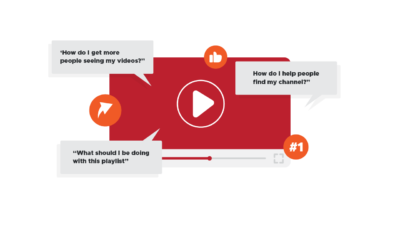Summary: Google’s AI Overview (AIO) is reshaping how users interact with search results, introducing an environment where generative answers often replace the need to click through to websites. While organic visibility is being consolidated into AI-generated summaries, paid search ads still have the opportunity to appear—just not within the AIO box itself. To remain visible and relevant, advertisers must adopt AI-forward campaign structures like Broad Match, AI Max for Search, and Performance Max, which feed Google’s systems the data it needs to surface ads around AI interactions contextually. B2B advertisers, in particular, must shift focus from click volume to conversion quality, using automation to engage further down the funnel where AI-curated users are more likely to be decision-ready.
Key Takeaways:
- Ads cannot appear inside the AIO box but around it—especially during follow-up queries.
- Broad Match, AI Max, and PMAX campaigns feed Google’s machine learning and are favored in the AIO ecosystem.
- Ad copy and landing page content must align with topically clustered queries to improve placement probability.
- B2B marketers should measure success not by impressions or CTR, but by qualified lead generation from high-intent searches.
- AI-optimized organic and paid strategies must now align—Google is analyzing the whole user journey, not just ad relevance.
Will AI Overview Affect My Paid Search Campaigns?
AI Overview marks the most significant shift in the search experience since the launch of featured snippets and Smart Bidding. Instead of presenting results in a static list, Google delivers conversational, AI-curated summaries directly on the SERP.
This development raises key questions for advertisers:
- If Google answers the queries itself, will users still see my ads?
- How do I target intent if keywords are no longer central?
- What campaign types perform best in an AIO-dominated space?
These are more than technical questions for paid search strategists—especially in high-value, long-lead B2B industries. They’re revenue-impacting changes that require a fundamental shift in how campaigns are built, measured, and optimized.
This article unpacks what AI Overview means for your ad visibility, which campaign structures are best suited to this new ecosystem, and how to adapt your strategy to stay competitive.
Where Do Paid Ads Live Now in an AI Overview?
While AIO pushes traditional organic listings down the page, Google ads can still appear above or below the AIO, or be triggered by follow-up queries generated from the AI summary.
What’s changed is how Google determines ad relevance.
Rather than matching specific keywords to specific queries, AIO environments rely on semantic relationships and contextual understanding. Legacy campaign types (e.g., Exact Match-only structures or manually managed CPCs) are becoming less effective. Google rewards machine-learning-aligned campaigns that allow it to dynamically surface ads based on user context and behavior patterns.
Google Ads Campaign Types for AIO
| Campaign Type |
AIO Compatibility |
Pros in AIO Environment |
Cons in AIO Environment |
B2B Suitability |
| Broad Match |
★★★★☆ |
Matches to related searches; feeds AI with data |
Lower control; requires strong negatives |
High (with tight conversion tracking) |
| AI Max (Broad Match + Max Conversion w/ no manual signals) |
★★★★☆ |
Full automation allows AI to optimize toward intent |
Requires trust in Google's black box |
Moderate to High |
| Performance Max |
★★★★★ |
Multi-channel reach, high automation, data feedback |
Limited visibility into what’s working |
High (if lead quality is measured carefully) |
| Exact Match |
★★☆☆☆ |
Precision for branded or bottom-funnel queries |
Doesn’t feed AI enough data; low flexibility |
Limited to brand terms |
| Manual CPC |
★☆☆☆☆ |
High control |
Low adaptability; inefficient in AI systems |
Not recommended |
What Paid Search Strategies Still Work in AIO?
While visibility inside the AIO is not possible through paid ads, these strategies allow advertisers to align with the AIO ecosystem:
1. Use Broad Match with Smart Bidding
Broad Match campaigns provide Google the semantic flexibility it needs to match related queries. Combined with Smart Bidding strategies like Max Conversions or Target CPA, this setup allows your ads to surface in follow-up interactions that stem from the AIO experience.
2. Align Ad Copy with AIO-Optimized Content
Your ads must mirror the structure and tone of high-performing AIO content:
- Ask and answer long-tail questions
- Use concise language
- Reinforce authority and topical depth
- Google is evaluating landing page quality and topical relevance more than ever—especially for AI-initiated sessions.
3. Leverage Performance Max (PMAX) for Full-Funnel Reach
Performance Max allows you to show ads across Google’s entire ecosystem (Search, Display, YouTube, Discovery, Gmail) using machine learning to optimize placements based on intent. While visibility data is limited, PMAX offers a strong chance of surfacing during AI-shaped journeys, especially if you feed it conversion-rich data.
What You Should Consider for B2B Marketing
B2B search journeys often involve multiple stakeholders, longer sales cycles, and higher average order values. AIO compresses top-of-funnel research into Google’s answers, meaning your ads may only be shown when decision-makers are closer to purchase.
What this means:
- Leads will be lower in volume, but potentially more qualified
- Custom conversion tracking is critical to identify high-value actions
- CRM integration (e.g., HubSpot, Salesforce) is essential to track lead quality across longer sales cycles
- Interplay between paid and organic content is no longer a “nice to have”—earning AI’s trust and improving placement is required.
AI-Optimized Organic + Paid = Visibility
Your paid campaigns don’t exist in a vacuum. Google’s machine learning evaluates:
- Your landing page experience
- Content structure
- Authority on the topic
- How your organic content supports your ad claims
A unified content strategy—SEO and paid media aligned to AIO standards—is critical for ongoing visibility.
🔗 Read more on why structured content is key in our organic AIO optimization guide.
Paid Search Isn’t Dead – But It’s Different
AIO isn’t eliminating ads. It’s reshaping the environment in which they’re served. For B2B marketers, the playbook must now include:
- Smarter campaign structures that feed Google’s AI systems
- Tighter landing page alignment with user intent
- Unified organic and paid efforts to establish trust and visibility
- A deeper focus on conversion quality over raw click numbers
If done right, your ads will continue to show and reach prospects who are further along their journey, more informed, and more likely to convert.
Call To Action:
We’re working with clients across B2B sectors to realign their paid media strategies in response to the AI Overview. Let’s discuss whether your Google Ads performance has changed recently or if you’re unsure how AIO affects your visibility.
We’ll audit your setup on a live call, align your campaigns with current AI behaviors, and build a path forward that balances automation with strategy. Contact us to start the conversation.
FAQs on AIO & Paid Media Campaigns
What is Broad Match in Google Ads?
Broad Match is a keyword match type where your ads can show for searches related to your keyword, even if they don’t contain the exact words. Google’s AI interprets search intent to match your ad to relevant queries. This can include synonyms, variations, and related concepts, making it valuable for feeding AI systems with more data.
What is AI Max in paid search?
AI Max offers a comprehensive suite of targeting and creative enhancements–including improved search term matching, better text customization of your headlines and descriptions, and final URL expansion to increase the relevancy of your landing page to a user’s intent.
How does AI Max perform in the AI Overview era?
Because AI Max relies heavily on Google’s automation, it can adapt quickly to changing search behaviors influenced by AI Overviews. The risk is reduced control over where and when your ads appear, so it’s best used when you have confidence in your conversion tracking and are comfortable with a “black box” approach.
Which campaign types are most compatible with the AI Overview environment? Performance Max campaigns score the highest for AIO compatibility, thanks to their multi-channel reach, high automation, and strong feedback loops into Google’s AI systems. Broad Match and AI Max also perform well because they provide the AI with rich intent signals. However, Exact Match and Manual CPC are less compatible due to their limited data feeding potential.
Why does Broad Match work well with AI Overview?
Broad Match can match ads to a wide range of related searches, which helps feed Google’s AI with more intent data. This makes it easier for AI to learn and optimize toward desired outcomes. The trade-off is reduced control over exact queries, meaning negative keywords and strong conversion tracking are essential.
What is AI Max, and how does it fit into an AI Overview strategy?
AI Max combines Broad Match with Maximize Conversions bidding, removing most manual signals. It’s designed to let Google’s algorithms optimize fully toward intent. This can be powerful in an AIO environment but requires high trust in Google’s “black box” decision-making.
Why is Performance Max rated the highest for AIO compatibility?
Performance Max leverages multiple channels (Search, Display, YouTube, Discover, Gmail, and Maps) with high automation. This broad reach provides AI with comprehensive data, enabling more accurate targeting and optimization. The main downside is limited transparency into which channels or assets drive results.
Should B2B advertisers use Exact Match campaigns in the AI Overview era?
Exact Match remains useful for highly targeted, branded, or bottom-funnel searches, where precision matters. However, because it limits query variation, it feeds less data into AI systems—making it less effective for AI learning in broad prospecting scenarios.
Why is Manual CPC not recommended in an AI Overview environment?
While Manual CPC offers the highest control over bids, it lacks the adaptability required for AI-driven systems. It doesn’t give Google’s algorithms enough flexibility to optimize in real time, leading to inefficiencies, especially in dynamic AIO search environments.


.jpg)




.jpg)




